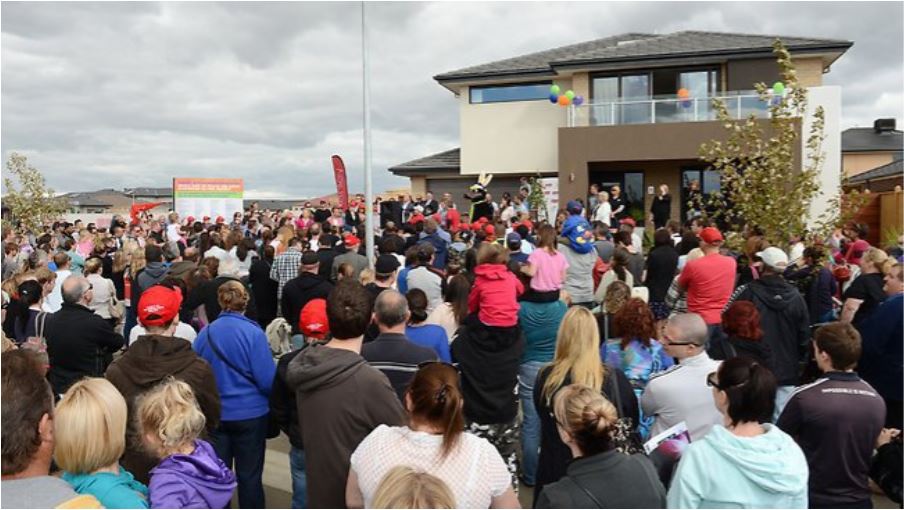It is unfortunately common for falling house prices to become a hot topic during economic downturns.
During the pandemic, this has again been the case, with some early “predictions” forecasting imminent double-digit property price falls.
Of course, nearly six months into the crisis that has not been the market reality with median dwelling prices posting minimal reductions.
According to CoreLogic, the national median dwelling value just fell 0.6 per cent in the three months to July.
What can history teach us?
While no one has a crystal ball to forecast what might happen to property prices post-pandemic, looking back can provide some insights about what may be ahead.
In times of past economic turmoil, real estate has been resilient in Australia due to it being a stable asset as well as providing shelter during turbulent times.
While there may have been a brief softening of market conditions, within a few years, research shows that property prices have continued to strengthen.
In fact, according to the Property Investment Professionals of Australia, house prices increased by as much as 100 per cent in the five years after the most recent recessions or economic downturns.
| 5 years | Sydney | Melbourne | Brisbane | Adelaide | Perth | Hobart | Darwin | Canberra |
| ending | % | % | % | % | % | % | % | % |
| 1980 | 100.7% | 37.6% | 49.7% | 37.7% | 64.7% | 40.2% | N/A | 33.0% |
| 1988 | 64.1% | 67.7% | 20.4% | 31.3% | 61.9% | 51.8% | N/A | 20.2% |
| 1996 | 16.0% | 3.1% | 23.3% | 5.9% | 27.3% | 20.5% | 47.3% | 11.6% |
| 2014 | 39.7% | 18.5% | 6.9% | 7.1% | 11.4% | 1.7% | 16.6% | 8.3% |
Source: PIPA
While these results should provide some confidence about what’s ahead, the current economic situation and lending environment are also different to previous economic downturns, which is more reason for optimism in my opinion.
Low rate environment
Compared to previous economic downturns, when interest rates had to be reduced rapidly to support the economy as well as the eventual recovery, rates are already historically low.
On top of these record low interest rates, lenders are providing mortgage repayment pauses to borrowers who have been financially impacted by the pandemic.
Previously these property owners may have had to sell their assets due to financial stress.
However, that is less likely to be the case this time – especially with financial support packages like JobKeeper also in play.
We certainly have not seen any marked increase in mortgagee in possession, or distressed, sales since the start of the crisis.
Another difference between now and then is that previous downturns have generally been caused by significant and prolonged economic shocks,which is not the same situation this time around.
Let’s consider that the GFC first began in 2008, yet interest rates have remained unusually low since that time, partly due to its prolonged economic impact around the globe.
While the economic impact of the crisis is forecast to be pronounced, it will also likely not linger as long as previous financial slumps.
Property price resilience
Within five years of the most recent downturns, the PIPA research shows that median house prices in every capital city had strengthened – in some cases significantly.
Part of the reason for this is that during times of trouble, the safest returns are usually found in property, especially when supported by low interest rates.

It is always important to remember that real estate is an asset that tends to grow in value quite slowly and sustainably.
This means that even if property prices were to soften over the next year, or even the next two, homeowners and investors should not panic.
Like any journey, there are always bumps in the road, with property prices generally experiencing periods of growth, stagnation, and softening over a 10- or 15-year period.
Yet, over this same time period, property prices are much higher than they were at the start.
Over the short-term, it is difficult to forecast the market cycle direction of any location with any certainty because of the unknown trajectory of the virus and the economic recovery.
However, the significant reduction of international migrants may negatively impact Sydney and Melbourne markets for a time.
Conversely, the work from home movement may see more people choose to migrate away from capital cities to regional areas that offer lifestyle as well as affordable property prices.
However, while we are in unprecedented territory when it comes to the way people will work in the future, the fundamentals of real estate as a stable asset over the long-term will never change.
























